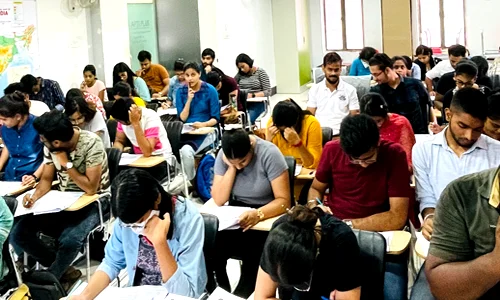



The US-led “Pax Silica” alliance excludes India due to its early-stage semiconductor ecosystem, limited advanced manufacturing and trade frictions. Though a short-term setback, it echoes India’s MSP trajectory. Ongoing initiatives like the India Semiconductor Mission and National Critical Mineral Mission aim to build capacity for future inclusion.
Click to View MoreAt the Johannesburg G20 Summit, India proposed six initiatives: a Traditional Knowledge Repository, Africa Skills Multiplier Program, Global Healthcare Response Team, drug-terror nexus framework, Critical Minerals Circularity plan and Open Satellite Data Partnership. These aim to boost health, security, technology and reinforce India’s role as the Global South’s voice.
Click to View MoreIndia-Canada ties sit at a tense crossroads. Strong trade and a vibrant diaspora contrast with mistrust rooted in security concerns and Khalistani extremism. The way forward lies in steady dialogue and deeper cooperation in critical minerals, clean energy, and aerospace while keeping economic engagement insulated from political friction.
Click to View MoreChina’s dominance in REE processing creates a major strategic risk for green tech and defense. With Beijing able to weaponize supplies, countries are turning to friend-shoring through the MSP. India is reforming mining laws and strengthening KABIL to cut dependence and secure long-term strategic and industrial autonomy.
Click to View MoreThe U.S.-China rivalry over trade, technology, and tariffs forces India to balance strategic autonomy with economic opportunity. Leveraging the “China Plus One” shift, India can attract FDI and diversify supply chains while advancing Atmanirbhar Bharat and the Quad to anchor its role in a multipolar world.
Click to View MoreIndia aims for 500 GW renewable capacity by 2030 and net-zero by 2070, relying on critical minerals like lithium and cobalt. To reduce import dependence, it launched the National Critical Minerals Mission, promoting domestic mining, recycling, circular economy, and public-private partnerships for energy self-reliance.
Click to View MoreIndia and Canada are resetting their relationship on pragmatism and mutual interest. Recent high-level dialogues have overcome past mistrust, promoting economic, technological, and security cooperation, paving the way for a resilient, strategically significant alliance that benefits both nations and global stability.
Click to View MoreRare Earth Elements (REEs) are 17 vital metals used in modern technologies like electronics, renewable energy, and defense systems. Although India holds significant reserves, it depends heavily on imports—mainly from China, which dominates global production and processing. The ongoing trade tensions have highlighted India’s need for self-reliance in critical minerals. To address this, the government has launched initiatives such as the National Critical Minerals Mission, policy reforms under the MMDR Act, and incentives for refining, recycling, and magnet manufacturing. Strengthening domestic capacity, fostering international collaborations, and ensuring sustainable extraction are key to making India a global player in the rare earth sector.
Click to View MoreChina’s export restrictions on rare earth elements, affecting global defense, semiconductor, and green energy sectors. India must urgently build domestic processing capacity and secure resilient supply chains to protect its strategic autonomy, economic security, and technological independence.
Click to View MoreNITI Aayog’s proposed Manufacturing & Infrastructure Index to benchmark states on policies, logistics, and approvals, promoting competitive federalism. By guiding investors and policymakers, it seeks to diversify supply chains, cut geopolitical risks, and secure critical resources essential for India’s industrial growth.
Click to View MoreIndia’s new policy exempts critical and atomic mineral mining projects from mandatory public hearings, aiming to fast-track approvals for defense, nuclear, and renewable sectors. While prioritizing national security and strategic needs, it requires strong environmental and social impact assessments to balance rapid resource extraction with sustainable development goals.
Click to View MoreIndia, with the world's fifth-largest rare earth reserves, faces challenges in domestic production due to complex extraction, radioactive elements, and atomic minerals classification. A shift in policy and investment is needed to leverage resources.
Click to View More
© 2025 iasgyan. All right reserved